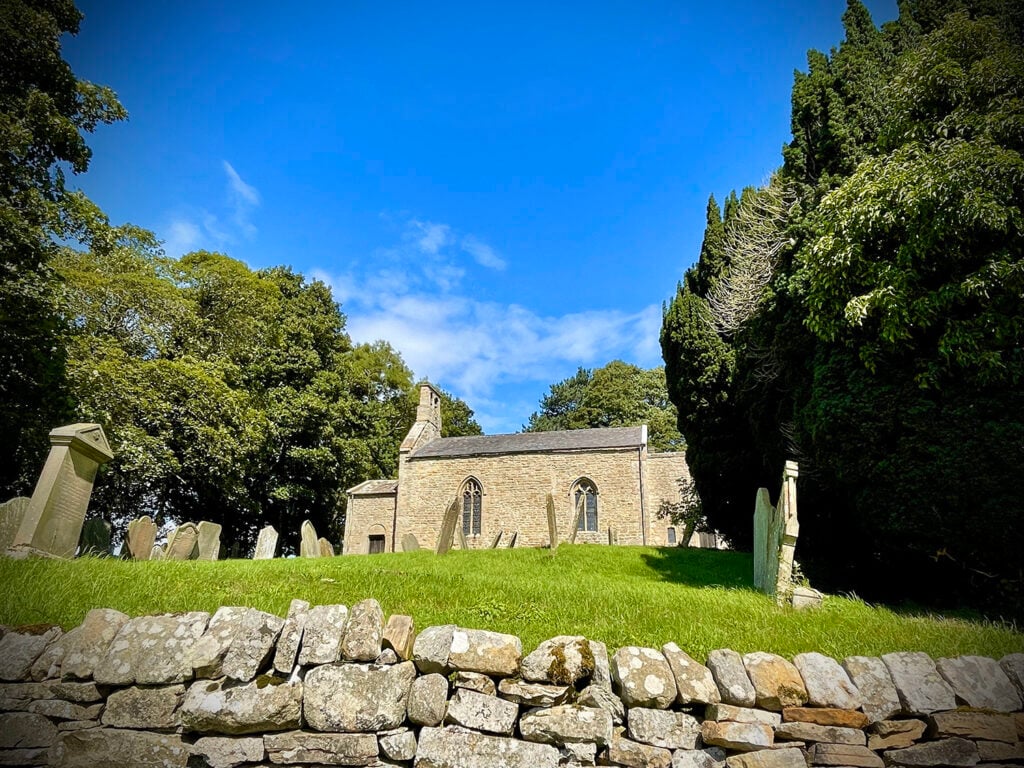Hidden away down a mile-long track, those lucky enough to find this treasure at the end of the journey will be royally rewarded with what is often regarded as the oldest church in Wensleydale. Mentioned first in Domesday Book back in 1086, the site upon which St Oswald’s church now stands on the edge of Thornton Steward has been in continued use as a place of Christian worship since Eadwine or Æduinus, King of Deira and Bernicia –later Northumbria—ruled in the 7th century. The saint to whom the church is dedicated was Oswald of Northumbria, a prince, Christian warlord, and the first great English monarch. Oswald invited Saint Aidan to spread the Christian religion and founded the famous monastery of Lindisfarne (Holy Island) near Oswald’s Capital at Bamburgh as his episcopal see. Oswald’s rule lasted almost a decade before he perished whilst fighting against the pagan Mercian king, Penda.

Vestiges of fabric dating to the Anglo-Saxon period can be found built within and placed throughout the church, including quoins, doorway jambs, semi-circular windows, Crossheads and Cross-shafts, and, in the porch, are two medieval grave covers, one dating to the 13th century with a cross base, shears, and the letters ‘M G’. Yet, the majority of the current structure appears to date from the Norman era, i.e., the 11th century, with much of the original planform remaining, though featuring 14th, 17th and 19th century alterations. Other features of note inside comprise, on the south side of the chancel, a piscina and a low-side window dating to the 14th century, while on the north is a 14th-century recessed niche, likely a founder’s tomb.
The indication is that the church was established by Alan ‘the Black’ Rufus, 1st lord of Richmond, and a relation of William the Conqueror, whose steward is thought to have resided in the village, hence the name Thornton Steward. This original village is thought to have surrounded the immediate boundaries of the church but was eradicated during the Black Death of the 14th century, remains of which have been archaeologically recorded, including earthworks and ridge and furrow.